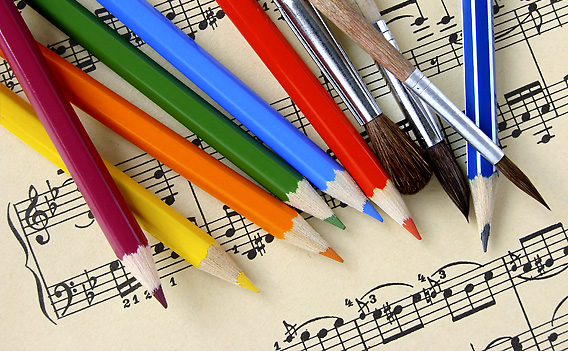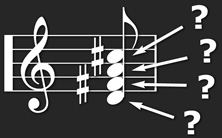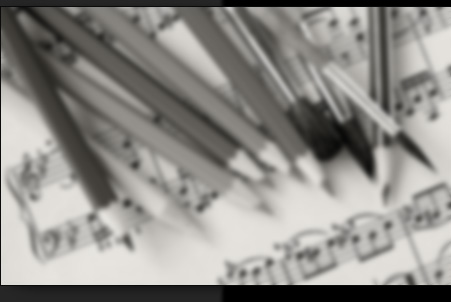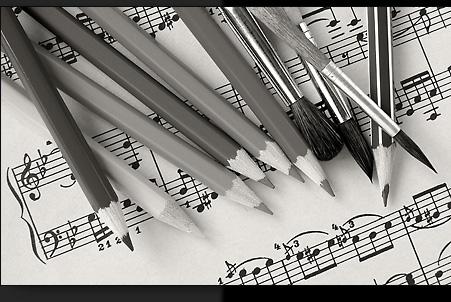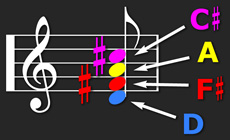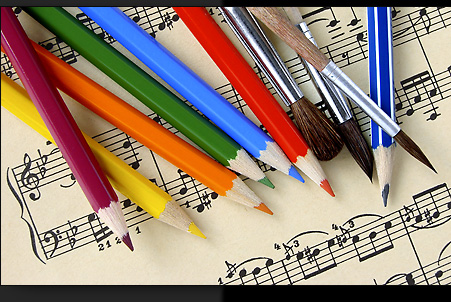Q. My friend has Perfect Pitch and can name any kind of chord (like a "half diminished seventh").
If someone tells you that he hears (for example) a Half Diminished Seventh chord using his "Perfect Pitch," just smile at him. He's not really using Perfect Pitch for this. Instead, this is his Relative Pitch speaking.
Why? Because he is describing how the tones RELATE to each other — part of his sense of RELATIVE Pitch.
This is where Relative Pitch gets its name: "Relative" refers to how the tones relate to each other.
Q. OK, but in general, isn't Perfect Pitch better to have than Relative Pitch?
Perfect Pitch cannot replace Relative Pitch. Only Relative Pitch gives you the clear picture of MUSIC IN MOTION.
Q. Why do I need Relative Pitch to understand music in motion?
Think of it this way: When someone speaks to you, do you hear a stream of single LETTERS:
L - i - k - e - T - h - i - s?
Probably not. Instead, your ear groups these letters into WORDS and PHRASES that you can understand.
Music is a quickly flowing stream of tones: D, G, A, F#, G, E, F#, D, etc. Even when you can know each pitch perfectly, music is much more than these individual tones.
If you want to understand the LANGUAGE of MUSIC, Perfect Pitch is not enough. Another dimension of hearing is required. This is the dimension of Relative Pitch.
Relative Pitch groups the "LETTERS" of the musical alphabet into "words" and "phrases" that you can quickly understand.
In other words, Relative Pitch groups NOTES into intervals, chords, and progressions that you can easily understand and follow. This is why only Relative Pitch gives you SPEED RECOGNITION of music in motion.
 |
Remember:
- ONLY Perfect Pitch gives you the rich COLOR experience of music — so that you can name and sing EXACT tones — all BY EAR.
- ONLY Relative Pitch gives you mastery of the varieties of chords, intervals, and harmonies that create the LANGUAGE of MUSIC, along with SPEED RECOGNITION of music IN MOTION.
Perfect Pitch and Relative Pitch TOGETHER complete your musical experience and give you a totally professional ear for music.
|
 |
Q. Which course should I start with: Perfect Pitch or Relative Pitch?
It's your choice.
Most people start with the Perfect Pitch Ear Training SuperCourse. Others want to first master all their music language skills — they begin with the Relative Pitch Ear Training SuperCourse.
You'll make your fastest progress when you study both courses at the same time. A simple Relative Pitch tune-up unclogs and opens even the most closed, stubborn ear — which also greatly SPEEDS UP your Perfect Pitch progress.
Your ear becomes more naturally open and free.
Pro Tip: Musicians around the world agree: you get fastest results if you do your Perfect Pitch ear training, say, for a few minutes each MORNING, followed by your Relative Pitch training for a few minutes each EVENING.
Listen daily from both angles, and you will soon own the prized possession: a virtuoso TOTAL EAR for music . . .
Are you ready to start?
Order both SuperCourses NOW (see below) and save an extra $70.
    
 |
|
|
Are you ready
to start?
Learn to understand and speak the language of music with both Perfect Pitch and Relative Pitch (see details below). |
|
 |
|
|

Course Contents
|
| |
|
|
|







